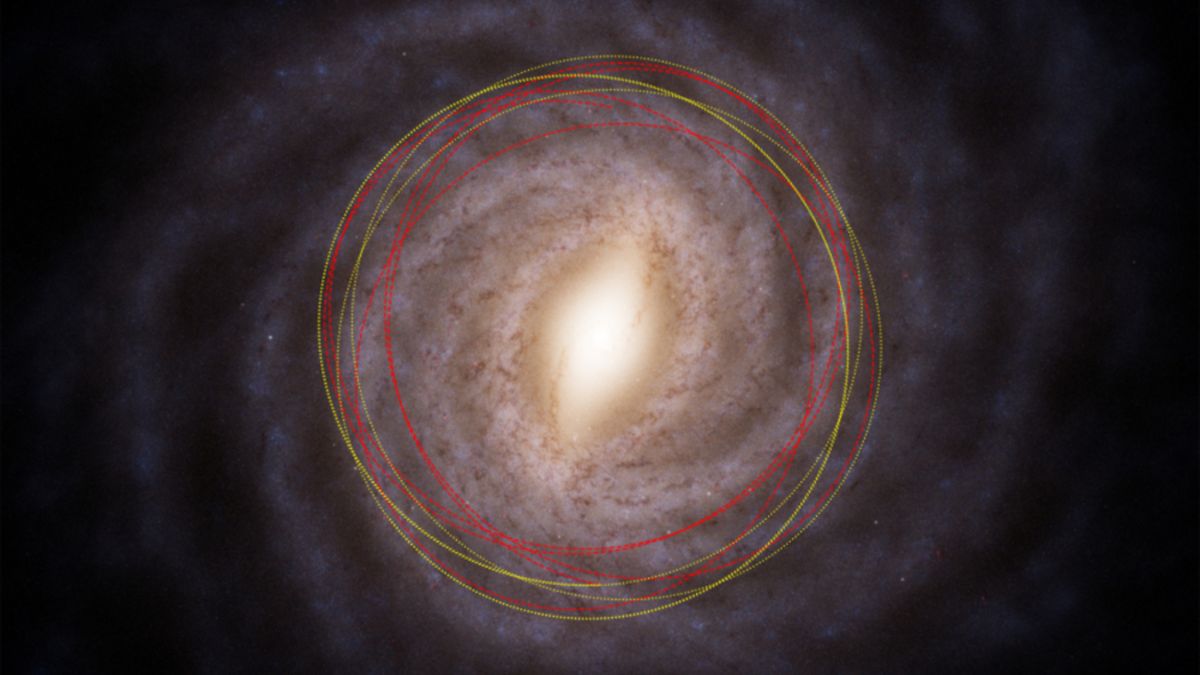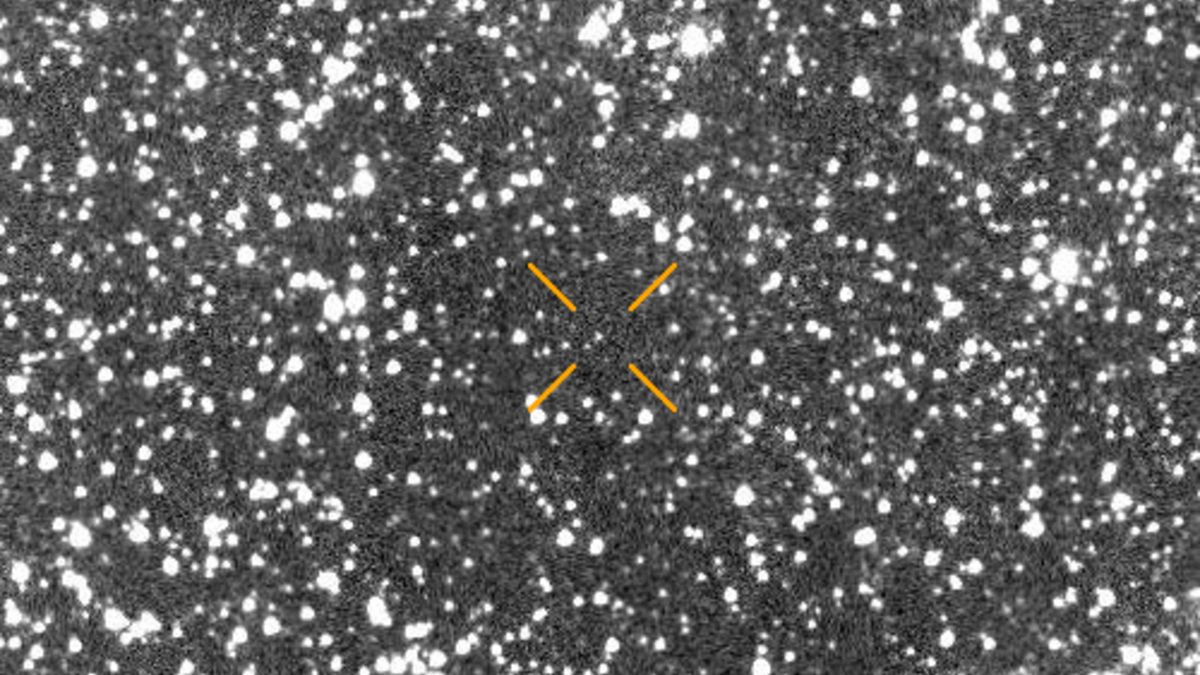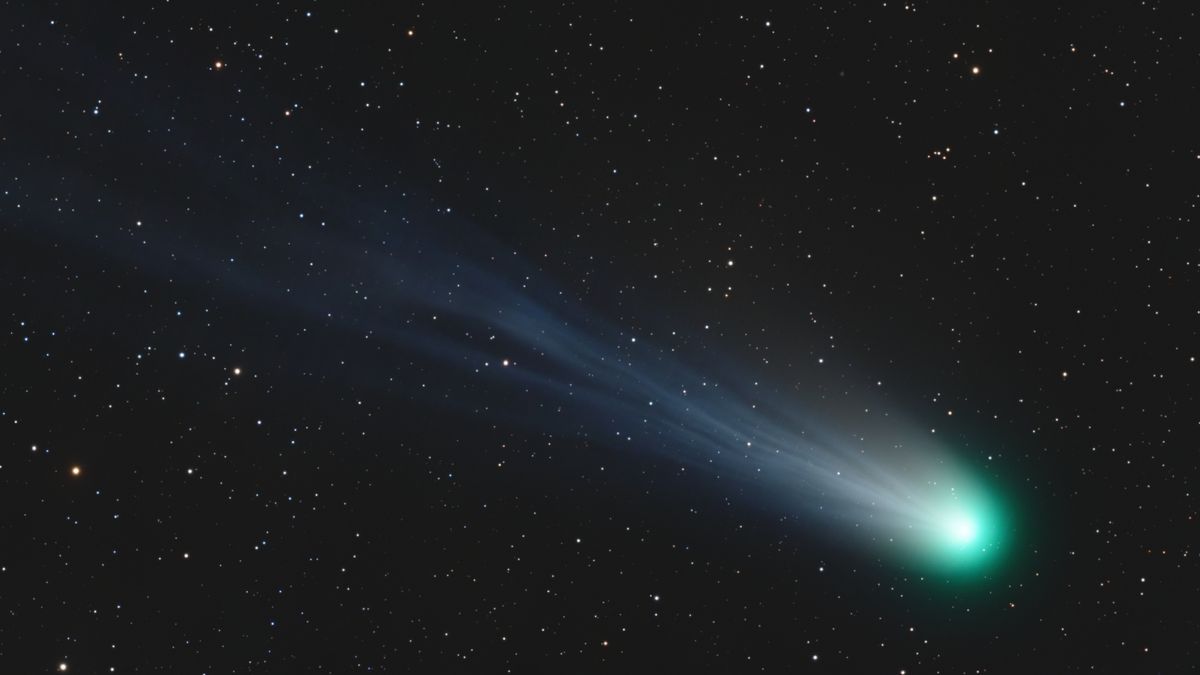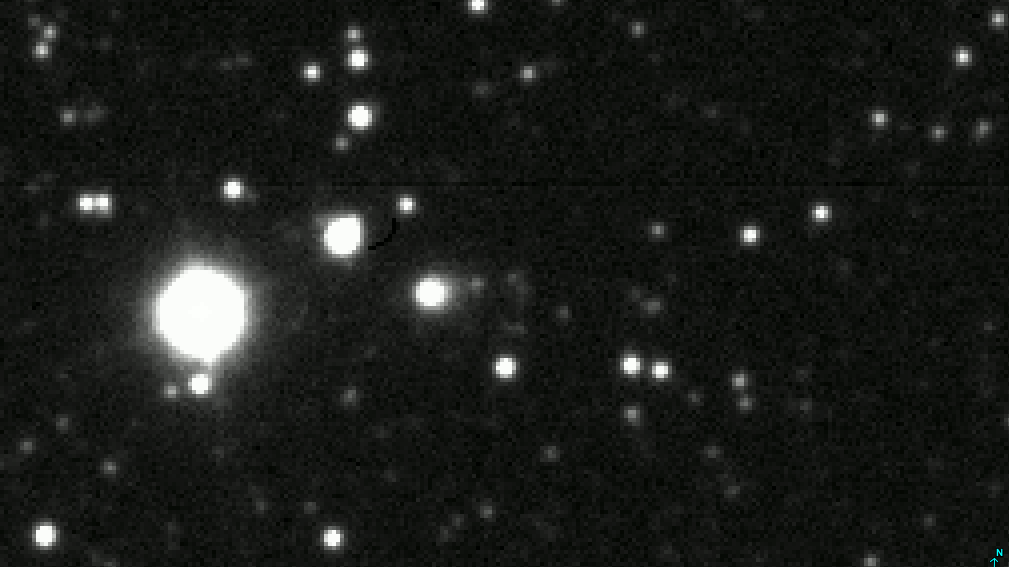The mysterious “interstellar visitor” that was recently spotted whizzing through the solar system may be around 3 billion years older than our cosmic neighborhood, a new study suggests. If confirmed, the alien interloper would be the oldest comet ever seen from Earth. And, if it’s made of what researchers think it is, it may also grow a spectacularly long tail in the coming months.
3I/ATLAS is an interstellar comet, potentially up to 15 miles (24 kilometers) across, that is currently shooting toward the sun at more than 130,000 mph (210,000 km/h). Once it passes its closest point to our home star, or perihelion, in late October, the extrasolar entity will begin its long journey back out of the solar system, before eventually leaving us behind forever.
The cosmic visitor was discovered July 1 and was confirmed as an interstellar object by NASA less than 24 hours later. Ever since, the astronomical community has been racing to uncover as much as they can about the alien comet.
In a new study, uploaded July 7 to the preprint server arXiv and presented July 11 at the Royal Astronomical Society’s National Astronomy Meeting in Durham, England, researchers used a computer model to simulate where 3I/ATLAS may have originated from. The team found that the comet likely originates from the Milky Way‘s “thick disk” — a population of stars located above and below the main disk where the sun and a majority of our galaxy’s stars reside.
Most of the stars in this part of the galaxy are believed to be billions of years older than our solar system, and because comets are made up from the leftovers of the protoplanetary disks that surround new stars, it is highly likely that 3I/ATLAS could be just as old.
Related: Watch newly discovered ‘interstellar visitor’ 3I/ATLAS shoot toward us in first livestream

“Our statistical method suggests that 3I/ATLAS is very likely to be the oldest comet we have ever seen,” study lead author Matthew Hopkins, a doctoral candidate at the University of Oxford in the U.K., said in a statement. However, the new findings have not yet been peer-reviewed, and more observations are needed to determine exactly how old the comet is.
The study team used a novel computer program, known as the Ōtautahi-Oxford model, which helps predict where interstellar objects (ISOs) come from using data from the European Space Agency‘s Gaia space observatory.
Hopkins designed the model while working toward completing his PhD, and he had only finished defending his doctoral thesis on the topic around a week before 3I/ATLAS was discovered, providing an immediate chance to put his theories to the test.
“It’s a fantastic opportunity to test our model on something brand new and possibly ancient,” Hopkins said.
Interstellar origins

Only two other ISOs have been discovered to date: 1I/’Oumuamua, an asteroid that was discovered in 2017; and 2I/Borisov, a comet spotted in 2019.
Both ‘Oumuamua and Comet Borisov entered the solar system head-on to the sun, relative to our home star’s trajectory through the Milky Way, hinting they come from the galaxy’s main disk. But 3I/ATLAS is coming at us side-on, meaning it has a totally different origin from the previous ISOs.
“This is an object from a part of the galaxy we’ve never seen up close before,” study co-author Chris Lintott, an astronomer at the University of Oxford, said in the statement. “We think there’s a two-thirds chance this comet is older than the solar system, and that it’s been drifting through interstellar space ever since,” he added.
As we collect more data about 3I/ATLAS, the researchers will continue to refine their model to further pinpoint where the alien interloper may have originated from. However, even then, there are limits to how precisely scientists can track its interstellar origins.
“We probably won’t ever be able to pin it down to a single star system,” Aster Taylor, a graduate student at the University of Michigan who was not involved in the new study, previously told Live Science.
A spectacular tail?

Understanding where 3I/ATLAS came from can also help researchers predict how it will behave when it shoots past the sun later this year.
Experts predict that planetary systems within the thick disk might have an abundance of water, meaning that 3I/ATLAS could be rich with water ice. If this is the case, it means the comet could likely grow a large cometary tail in the coming months, as the sun vaporizes its outer layers, the researchers wrote.
The cloud of ice, dust and gas that surrounds the comet, known as its coma, could also become much larger, allowing it to reflect more sunlight and appear much brighter to us, making it even more visually stunning as it approaches Earth.
However, the interstellar comet won’t be visible to the naked eye, meaning you will require a decent backyard telescope or a pair of stargazing binoculars to see it for yourself. The best time to see it will likely be in late 2025 and early 2026, the researchers wrote.

